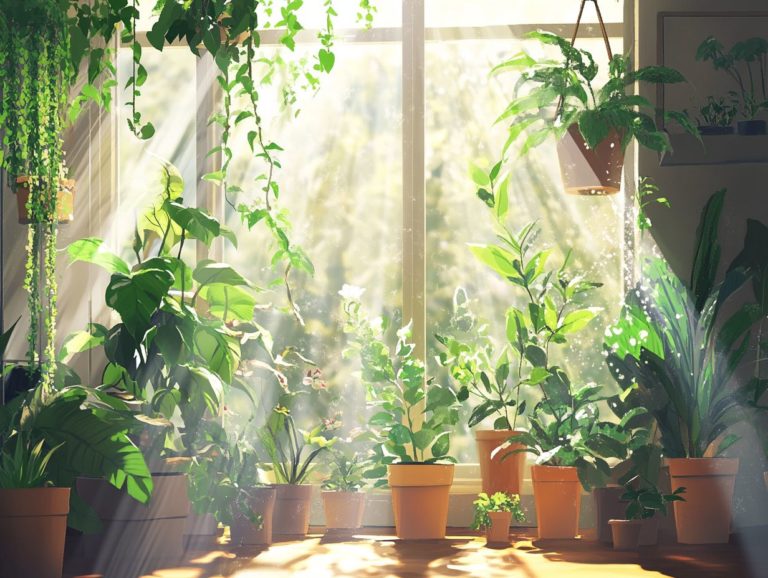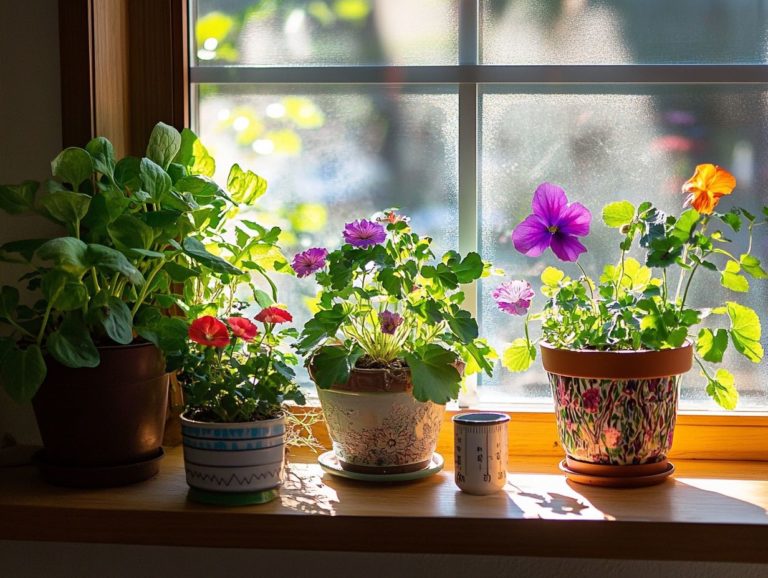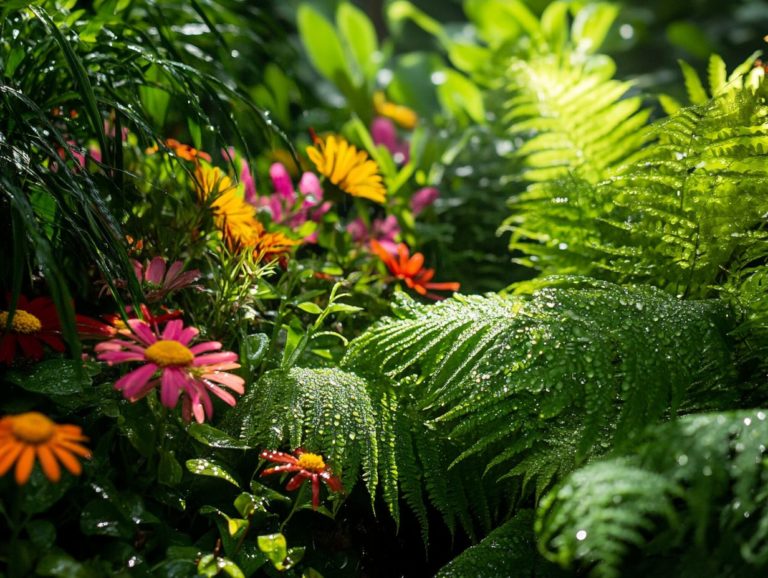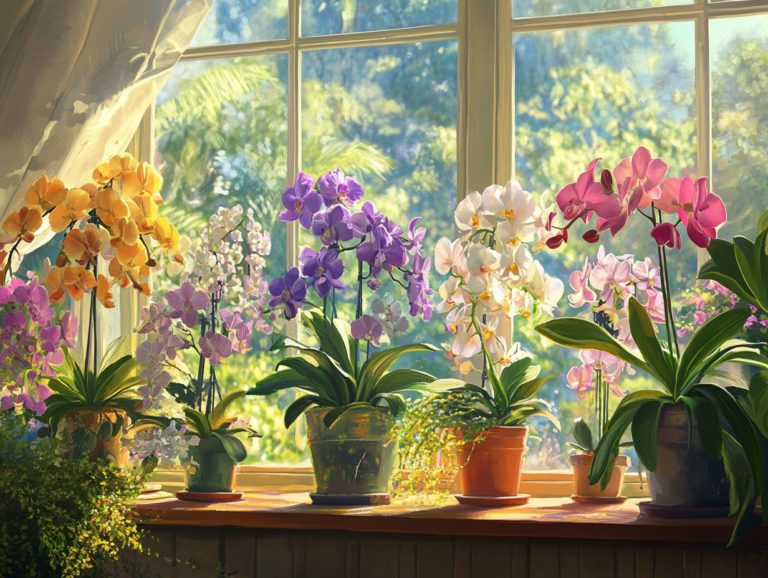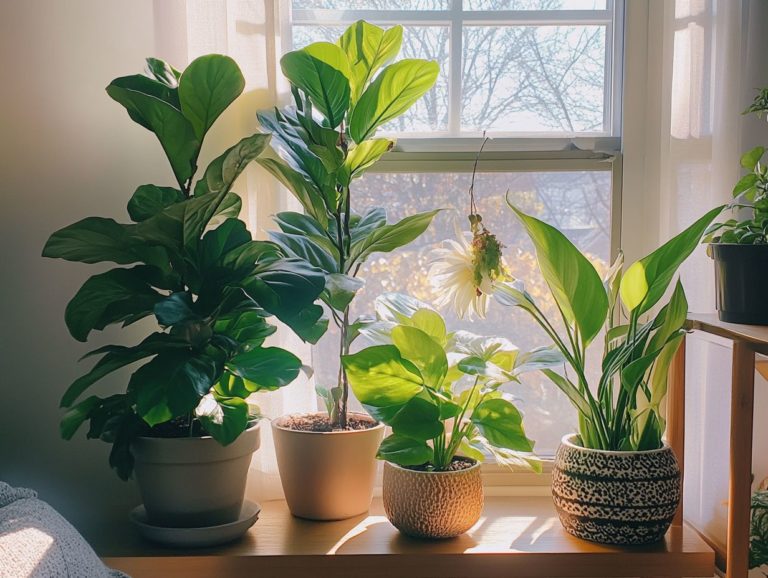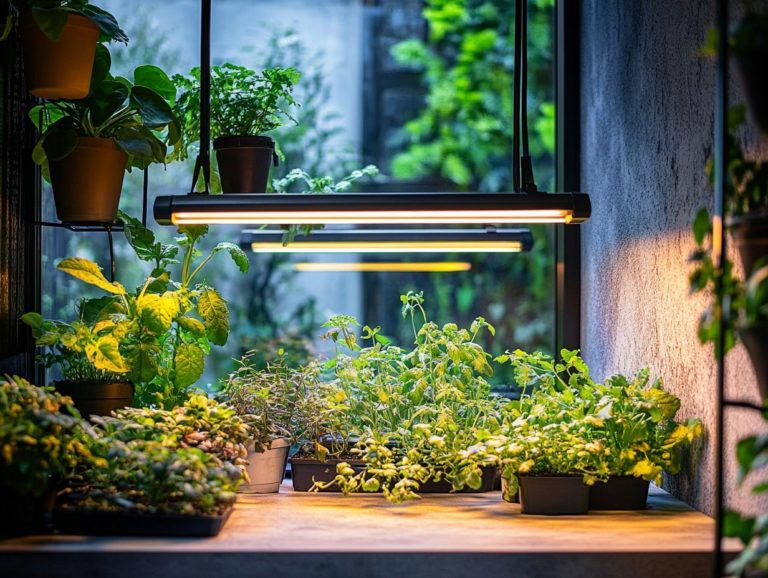Measuring the Effect of Light on Plant Growth
Did you know that light is the lifeblood of plant growth? Light is essential for the growth and development of your plants, acting as the primary energy source for photosynthesis.
Different types of light can significantly influence plant health, alongside various environmental factors that affect how well plants absorb that light. Let s dive into the exciting tools and techniques for measuring light intensity!
This exploration covers methods for tracking plant growth and guidance on interpreting results to understand the intricate relationship between light and plant vitality. Dive in to uncover the complex connections that drive plant life.
Contents
- Key Takeaways:
- The Role of Light in Plant Growth
- Factors Affecting Light Absorption in Plants
- Measuring Light Intensity
- Measuring Plant Growth
- Correlating Light and Plant Growth
- Frequently Asked Questions
- How does light affect plant growth?
- What is the best way to measure the effect of light on plant growth?
- Does the color of light make a difference in plant growth?
- How can I measure the amount of light my plants are receiving?
- Can too much light be harmful to plant growth?
- How can I use the measurement of light to improve my plant’s growth?
Key Takeaways:
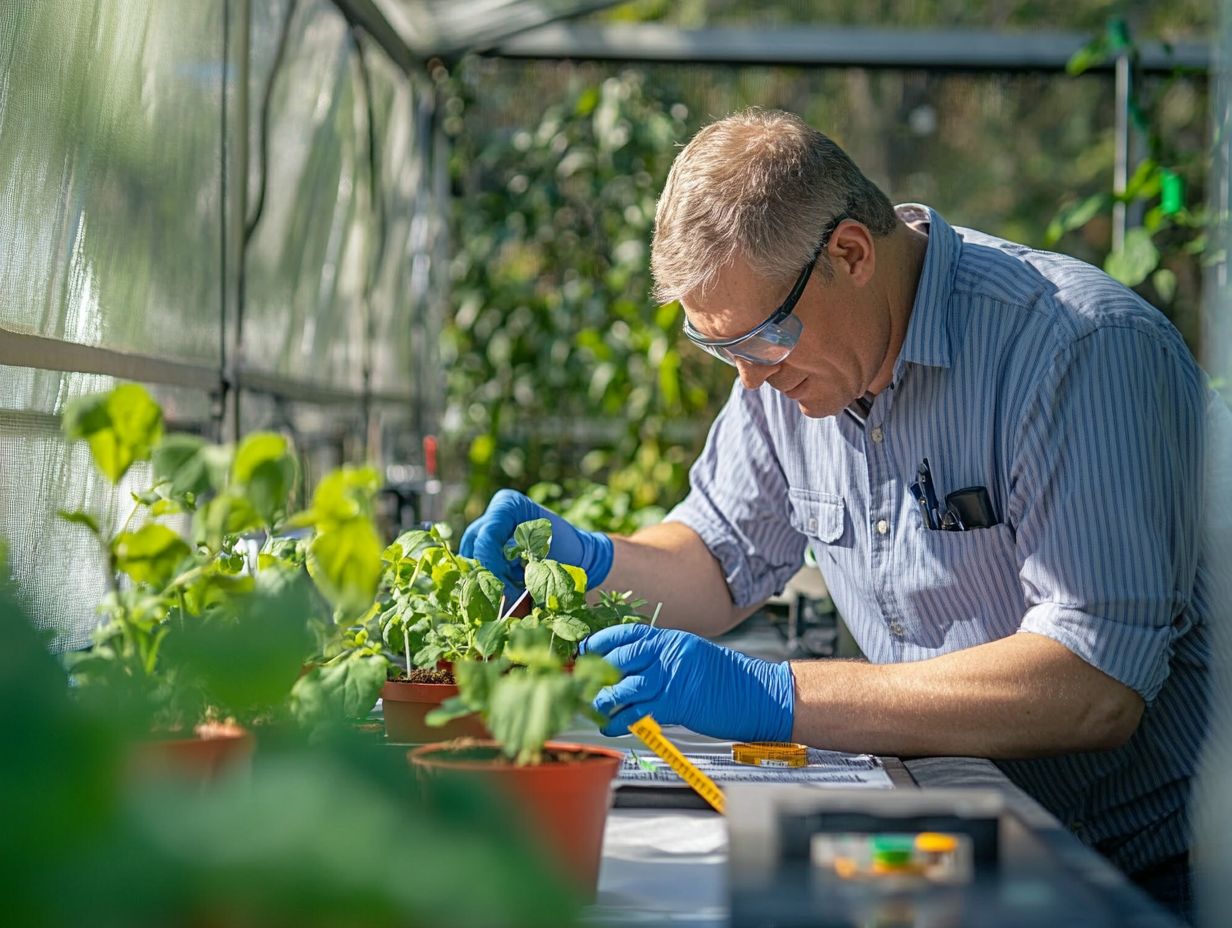
- Light is vital for plant growth, powering photosynthesis.
- Different types of light can boost or hinder your plants health.
- Learn how to measure light and maximize your plants growth potential!
The Role of Light in Plant Growth
Light is essential for plant growth. It significantly influences key physiological processes like photosynthesis and how plants grow and develop in response to light.
The intricate dance between light and plant development affects metabolic activities and drives responses to environmental cues. Understanding this relationship is crucial to optimizing plant health and productivity.
By effectively leveraging the capabilities of light, you can enhance plant growth and development. Ultimately, this fosters healthier ecosystems and improves agricultural practices.
Understanding Photosynthesis
Photosynthesis is the fascinating process by which plants transform light energy into chemical energy. This occurs primarily through the absorption of light by chlorophyll found in the chloroplasts.
This remarkable process fuels plant growth and plays a vital role in sustaining life on Earth. Chlorophyll captures sunlight and turns it into chemical energy that fuels the synthesis of glucose from carbon dioxide and water.
As plants soak up that light, they kickstart the production of important plant hormones that help with growth, like auxins and cytokinins. These hormones, influenced by the availability of light, regulate various growth patterns, enabling plants to adapt efficiently to their environment.
Photosynthesis is the cornerstone of food webs, supporting both terrestrial and aquatic ecosystems.
Factors Affecting Light Absorption in Plants
Several factors influence light absorption in plants. These include the quality, intensity, and duration of light.
Understanding these elements is crucial in grasping processes like photoperiodism and phototropism, which shape how plants grow and adapt in their environments.
Types of Light and Their Impact

Different types of light, including blue wavelengths and red light, uniquely influence plant growth. This occurs primarily through their interaction with chlorophylls and chromoproteins.
These light wavelengths activate specific photoreceptors, such as phytochromes and cryptochromes. These photoreceptors regulate essential processes like photosynthesis and phototropism.
Blue light excels at promoting chlorophyll production, resulting in vibrant green foliage that flourishes under optimal light conditions. In contrast, red light plays a crucial role in flowering and fruiting.
Red light directly affects plant hormone levels, especially auxins and gibberellins, which dictate growth patterns and reproductive success. Far-red light, often underestimated, also aids plants in assessing their surroundings.
This allows them to adjust their growth in competitive environments, ultimately enhancing their overall health and vitality.
Other Environmental Factors
Light isn’t the only factor in plant growth. Nutrient exchange and disease resistance mechanisms also play crucial roles.
Soil nutrients provide essential elements that support plant metabolic processes. A plant s ability to resist pathogens is vital for its survival against various diseases.
Environmental stressors like drought or extreme temperatures can hinder growth. These challenges prompt plants to activate special sensors that detect changes in their environment.
Once activated, these pathways trigger a series of biological reactions. This helps plants adjust their growth patterns, optimize resource allocation, and enhance their resilience against stressors.
This intricate process fosters sustainable growth, ensuring that plants thrive even under challenging conditions.
Measuring Light Intensity
Measuring light intensity is essential for you as a horticulturist. It enables you to create optimal growing conditions for your plants.
By using various tools and techniques, you can effectively assess the light spectrum within your environment. This ensures your plants reach their fullest potential.
Tools and Techniques
You have access to sophisticated tools for accurately measuring light. Instruments like spectroradiometers and light meters provide critical data for your analysis.
Spectroradiometers can capture light across a broad spectrum. They offer detailed insights into specific wavelengths that plants use for photosynthesis.
Light meters are perfect for quick assessments of overall light intensity. Utilizing these tools enables you to monitor lighting conditions effectively.
This ensures your plants receive the optimal exposure necessary for robust growth.
By analyzing the data, you can discover vital patterns and correlations between light availability and plant responses. To enhance your understanding, explore the role of natural light in plant growth. Fine-tune your growing conditions today by adjusting artificial lighting or repositioning plants to cultivate an ideal environment that maximizes both yield and quality.
Measuring Plant Growth
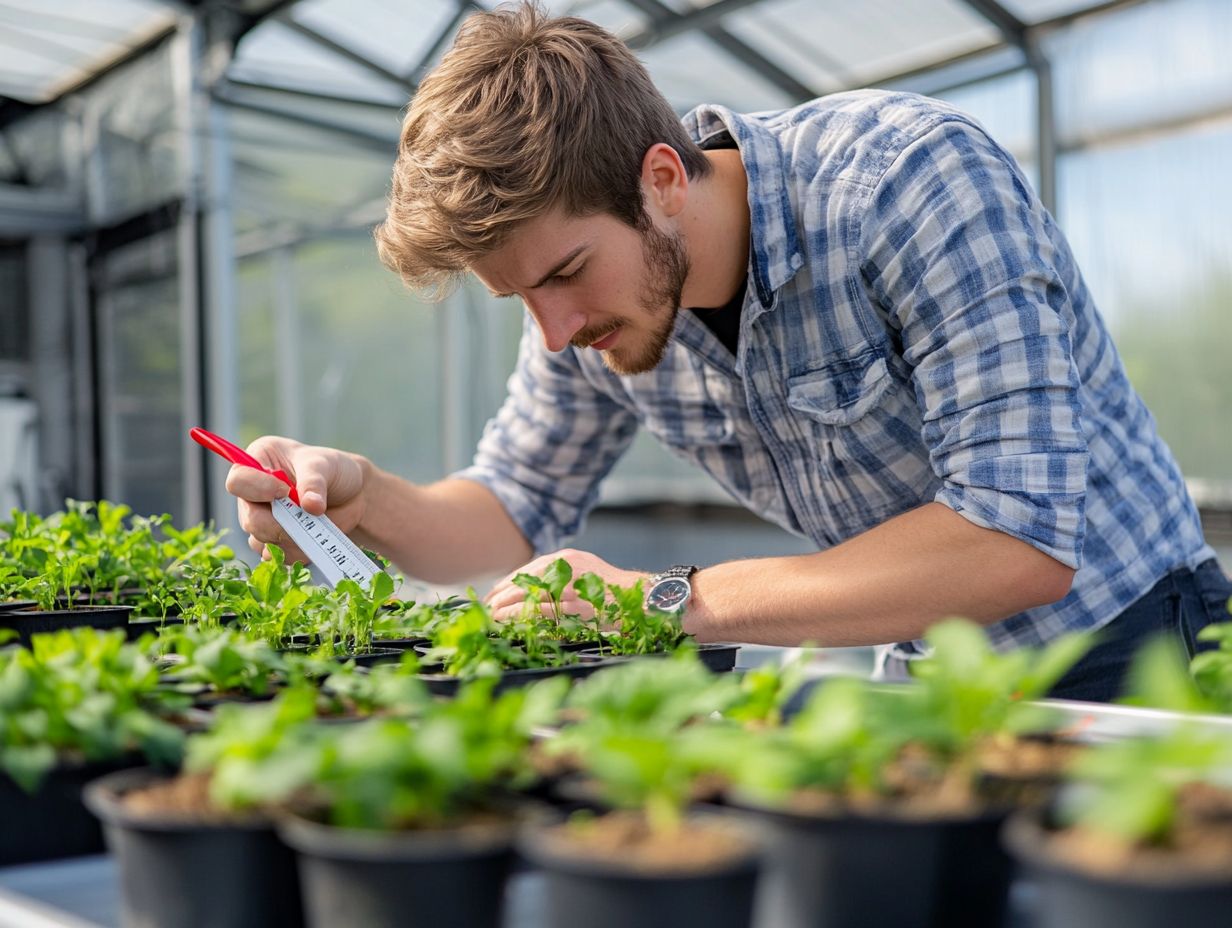
Measuring plant growth encompasses a range of methods that allow you to track growth patterns and evaluate environmental adaptation.
By using these techniques, you gain valuable insights that can elevate your horticultural practices and optimize plant performance.
Methods for Tracking Growth
Tracking plant growth involves monitoring various factors, including growth hormones influencing both root and shoot systems.
By assessing biomass, you can quantify the overall health and progress of a plant s development. This provides a clear indicator of its vitality.
Evaluating root and shoot growth by measuring length and density reveals how effectively the plant absorbs nutrients and moisture from its surroundings.
Understanding how flowering is regulated is equally crucial. Hormones like gibberellins and auxins play vital roles in initiating flower development and ensuring successful reproduction.
Analyzing hormone levels can provide valuable insights into environmental conditions that trigger flowering. This enables you to refine your cultivation practices for even better results.
Correlating Light and Plant Growth
Understanding the relationship between light and plant growth is crucial. Varying light conditions influence both primary and secondary growth processes in plants.
Frequently Asked Questions
How does light affect plant growth?
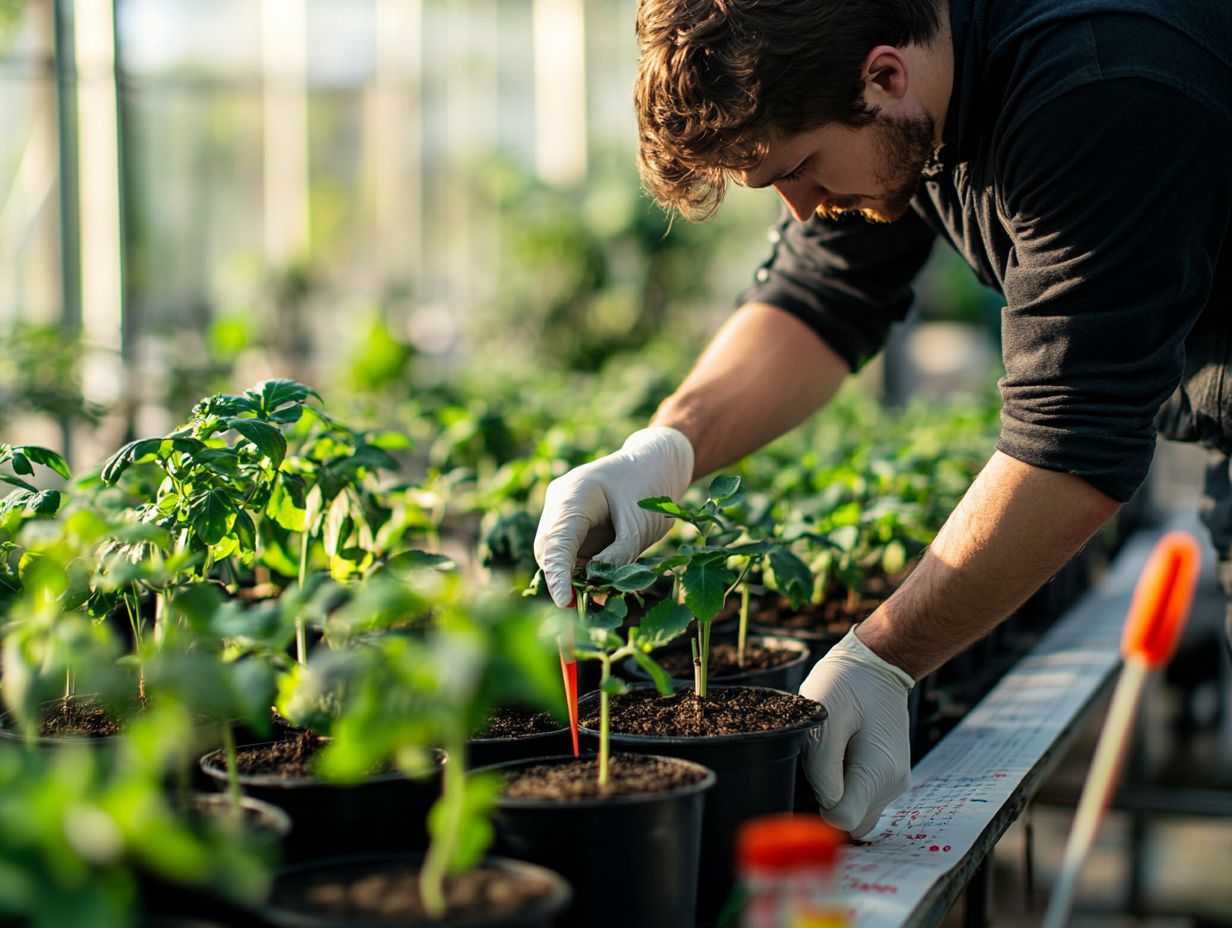
Light is essential for photosynthesis, the process by which plants convert light energy into chemical energy and produce food. Without adequate light, plants cannot produce enough food to support growth and survival.
What is the best way to measure the effect of light on plant growth?
To measure light’s effect on plant growth, conduct a controlled experiment. Keep soil, water, and nutrients constant, and change only the amount or type of light. This allows for a direct comparison of plant growth under different light conditions.
Does the color of light make a difference in plant growth?
Yes, different colors of light have varying effects on plant growth. Red and blue light are the most important for photosynthesis, while green light is reflected and contributes little to growth. A combination of different colors of light is usually best for overall plant growth.
How can I measure the amount of light my plants are receiving?
There are several ways to measure the amount of light your plants are receiving. You can use a light meter that measures the intensity of light in foot-candles or lux. Try using a smartphone app that turns your camera into a light meter for easy measurement! Alternatively, count the number of hours of sunlight your plants receive each day.
Can too much light be harmful to plant growth?
Yes, too much light can be harmful to plant growth. Plants have a limit for photosynthesis, and excess light can damage their leaves and reduce their energy production. This is why providing the right amount of light is crucial for your plants’ thriving!
How can I use the measurement of light to improve my plant’s growth?
By measuring the amount of light your plants receive, you can adjust their exposure to optimize growth. This might involve moving them to a sunnier or shadier spot, using grow lights, or providing shade during the hottest part of the day. Regularly monitor light levels to ensure your plants receive enough light for optimal growth.

